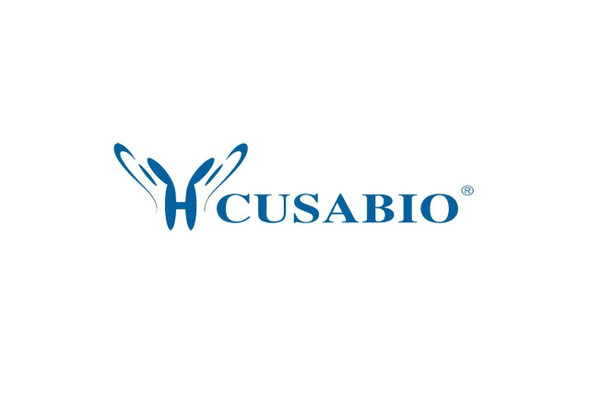Cusabio Human Recombinants
Recombinant Human Caspase-8 (CASP8), partial | CSB-RP181094h(A3)
- SKU:
- CSB-RP181094h(A3)
- Availability:
- 3 - 7 Working Days
Description
Recombinant Human Caspase-8 (CASP8), partial | CSB-RP181094h(A3) | Cusabio
Alternative Name(s): Apoptotic cysteine protease Apoptotic protease Mch-5 CAP4 FADD-homologous ICE/ced-3-like protease FADD-like ICE Short name: FLICE ICE-like apoptotic protease 5 MORT1-associated ced-3 homolog Short name: MACH Cleaved into the following 2 chains: Caspase-8 subunit p18 Caspase-8 subunit p10
Gene Names: CASP8
Research Areas: Apoptosis
Organism: Homo sapiens (Human)
AA Sequence: SESQTLDKVYQMKSKPRGYCLIINNHNFAKAREKVPKLHSIRDRNGTHLDAGALTTTFEELHFEIKPHDDCTVEQIYEILKIYQLMDHSNMDCFICCILSHGDKGIIYGTDGQEAPIYELTSQFTGLKCPSLAGKPKVFFIQACQGDNYQKGIPVETD
Source: E.coli
Tag Info: N-terminal 6xHis-tagged
Expression Region: 217374aa
Sequence Info: Partial
MW: 21.9 kDa
Purity: Greater than 90% as determined by SDS-PAGE.
Relevance: Most upstream protease of the activation cascade of caspases responsible for the TNFRSF6/FAS mediated and TNFRSF1A induced cell death. Binding to the adapter molecule FADD recruits it to either receptor. The resulting aggregate called death-inducing signaling complex (DISC) performs CASP8 proteolytic activation. The active dimeric enzyme is then liberated from the DISC and free to activate downstream apoptotic proteases. Proteolytic fragments of the N-terminal propeptide (termed CAP3, CAP5 and CAP6) are likely retained in the DISC. Cleaves and activates CASP3, CASP4, CASP6, CASP7, CASP9 and CASP10. May participate in the GZMB apoptotic pathways. Cleaves ADPRT. Hydrolyzes the small-molecule substrate, Ac-Asp-Glu-Val-Asp-|-AMC. Likely target for the cowpox virus CRMA death inhibitory protein. Isoform 5, isoform 6, isoform 7 and isoform 8 lack the catalytic site and may interfere with the pro-apoptotic activity of the complex.
Reference: "Characterization of caspase-8L: a novel isoform of caspase-8 that behaves as an inhibitor of the caspase cascade."Himeji D., Horiuchi T., Tsukamoto H., Hayashi K., Watanabe T., Harada M.Blood 99:4070-4078(2002)
Storage: The shelf life is related to many factors, storage state, buffer ingredients, storage temperature and the stability of the protein itself. Generally, the shelf life of liquid form is 6 months at -20?/-80?. The shelf life of lyophilized form is 12 months at -20?/-80?.
Notes: Repeated freezing and thawing is not recommended. Store working aliquots at 4? for up to one week.
Function:
Involvement in disease:
Subcellular Location:
Protein Families:
Tissue Specificity:
Paythway:
Form: Liquid or Lyophilized powder
Buffer: If the delivery form is liquid, the default storage buffer is Tris/PBS-based buffer, 5%-50% glycerol. If the delivery form is lyophilized powder, the buffer before lyophilization is Tris/PBS-based buffer, 6% Trehalose, pH 8.0.
Reconstitution: We recommend that this vial be briefly centrifuged prior to opening to bring the contents to the bottom. Please reconstitute protein in deionized sterile water to a concentration of 0.1-1.0 mg/mL.We recommend to add 5-50% of glycerol (final concentration) and aliquot for long-term storage at -20?/-80?. Our default final concentration of glycerol is 50%. Customers could use it as reference.
Uniprot ID: Q14790
HGNC Database Link: N/A
UniGene Database Link: N/A
KEGG Database Link: N/A
STRING Database Link: N/A
OMIM Database Link: N/A


-SDS__19649.1638526809.jpg?c=1)

-SDS__19649.1638526809.jpg?c=1)




